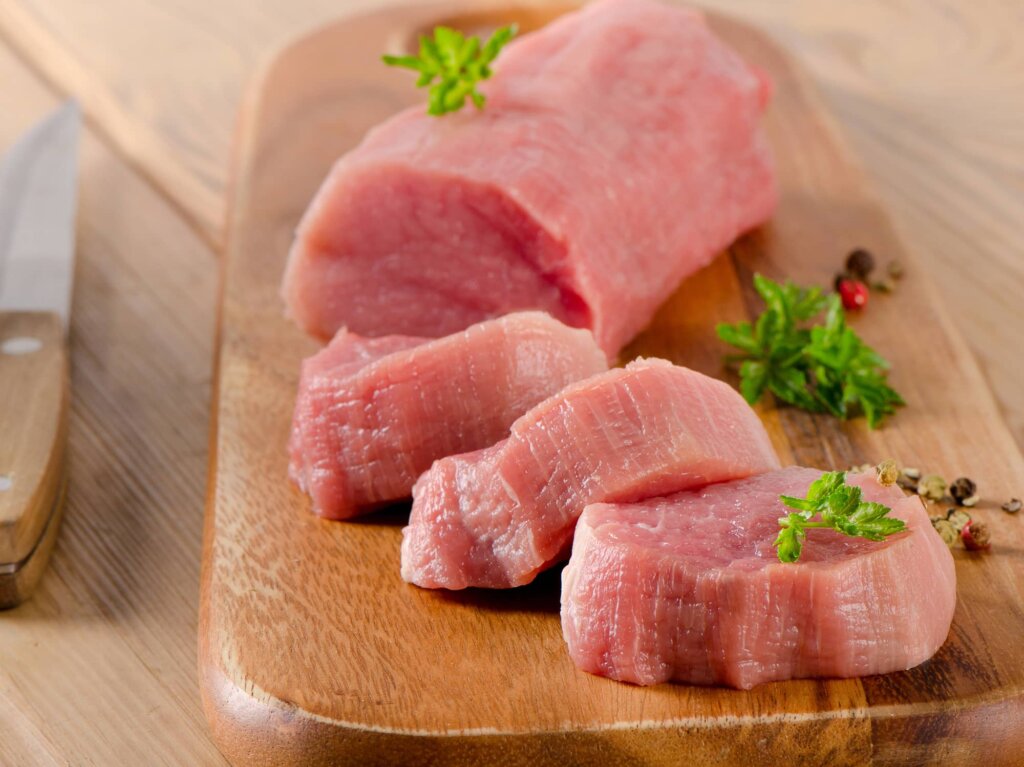
Defrosting is one of those parts of cooking that is far from glamorous. You won’t see big name chefs dedicating a chapter to it in their cookbooks or discussing it on their cooking shows. Yet it’s a very important step in preparing food that can affect both the quality and safety of the finished dish. Learning to defrost meat properly, such as a juicy pork tenderloin, will level up your cooking abilities while ensuring you’re doing everything you can to follow the latest food safety recommendations.
Why Defrosting is Important
Some smaller and thinner foods, such as shrimp or salmon, are easily cooked directly from frozen. Most animal meats, such as chicken breasts and pork tenderloins, aren’t recommended for cooking from frozen. The problem is that the temperature will take a long time to stabilize throughout the whole piece of meat.
The center of the pork tenderloin will remain frozen for a long time, risking overcooking at the surface. The meat between the icy center and overcooked exterior will hover at a medium temperature that allows bacteria to flourish.
You’re much more likely to end up with a safe and perfectly cooked piece of meat if you defrost it before cooking. Yet even how you handle the tenderloin during defrosting will affect the texture and safety of the cooked meat. Taking the time to thaw pork tenderloin with care will pay off by helping you create a delicious and safe meal.
Thawing Guidelines and Tips
- Keep the meat cool while it defrosts, but warm enough to actually melt the ice. If you’re using the microwave to defrost the meat, it may partially cook and you must immediately start cooking the tenderloin after that point.
- Change the water regularly if defrosting in cold water. It could warm up and become unsafe for the meat, but more than likely it’s going to get too cold to keep the defrosting action going. Putting in new cold tap water warms the temperature without risking bacterial growth.
The Best Ways to Defrost With Step-by-Step Instructions
Instead of tossing that tenderloin on the counter and waiting a few hours, use one of the three approved and safe methods for defrosting.
In the Fridge
The safest and most convenient way to defrost a pork tenderloin is to place the frozen meat in the refrigerator. The steady cool temperature will ensure the meat is always in the safe temperature range. Unfortunately, this defrosting method is very slow. It can take one to two days to completely defrost a pork tenderloin or similar roast depending on its size. If you can plan your cooking out in advance, it’s the easiest method because the meat can stay in the refrigerator for a few extra days if you have to change your plans.
In Cold Water
For faster results that will take a few hours, try filling your sink up with cold water and floating the pork tenderloin in it. Placing a pot lid over the package of meat to push it below the surface will speed up defrosting and protect against uneven results. You need to change the water every 30 minutes to keep it cool and to speed up defrosting, and the process will still take a few hours for the average pork tenderloin. It works well as long as you have a few hours before you plan to cook and you’ll be home to change the water out.
In the Microwave
The fastest method to defrost a piece of meat like a pork tenderloin is to use the microwave. You need to unwrap the pork roast and free it from any packaging before placing it in the microwave. Running cold water over the package is the best way to unstick it by melting just the surface layer of ice. Place the uncovered pork tenderloin on a microwave safe plate or glass dish.
Use your microwave’s defrost feature, setting the strength at 20% if you can control it. Defrost the meat for around 3 minutes at a time, flipping it over and rotating it each time. Keep checking the texture until it’s soft enough to bend, indicating there is no more ice in the center. Cook immediately rather than moving it to the refrigerator since you’ve warmed the meat enough to trigger bacterial growth.
Storing Thawed Pork Tenderloin
Pork tenderloin that is defrosted with cold water or in the refrigerator can stay in the fridge for a few days without losing quality or becoming compromised. If you’ve thawed the pork tenderloin in the microwave or through any other kind of exposure to heat, you can’t store the raw meat and must cook it immediately. Once the meat is fully cooked, you can freeze it again or keep it in the refrigerator for up to three days. There’s no need to immediately serve the meat just because you had to finish cooking it. Pre-cooked pork tenderloin is ideal for use in dishes like:
- Roasted pork sandwiches
- Tacos
- Green salads
- Pork fried rice
- Pork noodle casserole.
Conclusion
Freezing pork tenderloins is a great way to take advantage of a deep discount or sale without having to cook a lot of meat all at once. Make sure you’re freezing the meat with care to avoid quality loss and freezer burn during its time on ice. Pair that with proper defrosting techniques and you won’t be able to tell the meat was frozen at all. Use your favorite seasonings to add flavor whether you’re planning to grill, roast, or slice and fry the meat.

